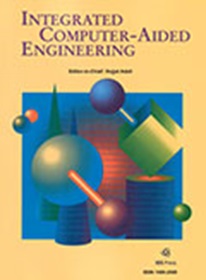Predictor-corrector models for lightweight massive machine-type communications in Industry 4.0
IF 5.3
2区 计算机科学
Q1 COMPUTER SCIENCE, ARTIFICIAL INTELLIGENCE
引用次数: 0
Abstract
Future Industry 4.0 scenarios are characterized by seamless integration between computational and physical processes. To achieve this objective, dense platforms made of small sensing nodes and other resource constraint devices are ubiquitously deployed. All these devices have a limited number of computational resources, just enough to perform the simple operation they are in charge of. The remaining operations are delegated to powerful gateways that manage sensing nodes, but resources are never unlimited, and as more and more devices are deployed on Industry 4.0 platforms, gateways present more problems to handle massive machine-type communications. Although the problems are diverse, those related to security are especially critical. To enable sensing nodes to establish secure communications, several semiconductor companies are currently promoting a new generation of devices based on Physical Unclonable Functions, whose usage grows every year in many real industrial scenarios. Those hardware devices do not consume any computational resource but force the gateway to keep large key-value catalogues for each individual node. In this context, memory usage is not scalable and processing delays increase exponentially with each new node on the platform. In this paper, we address this challenge through predictor-corrector models, representing the key-value catalogues. Models are mathematically complex, but we argue that they consume less computational resources than current approaches. The lightweight models are based on complex functions managed as Laurent series, cubic spline interpolations, and Boolean functions also developed as series. Unknown parameters in these models are predicted, and eventually corrected to calculate the output value for each given key. The initial parameters are based on the Kane Yee formula. An experimental analysis and a performance evaluation are provided in the experimental section, showing that the proposed approach causes a significant reduction in the resource consumption.工业4.0中轻量级大规模机器型通信的预测校正模型
未来工业4.0场景的特点是计算过程和物理过程之间的无缝集成。为了实现这一目标,无处不在地部署了由小型传感节点和其他资源约束设备组成的密集平台。所有这些设备的计算资源都是有限的,只够执行它们所负责的简单操作。其余的操作被委托给管理传感节点的强大网关,但资源从来都不是无限的,随着越来越多的设备部署在工业4.0平台上,网关在处理大量机器类型的通信时出现了更多的问题。尽管问题多种多样,但与安全相关的问题尤为关键。为了使传感节点能够建立安全通信,目前几家半导体公司正在推广基于物理不可克隆功能的新一代设备,其在许多实际工业场景中的使用量每年都在增长。这些硬件设备不消耗任何计算资源,但会迫使网关为每个单独的节点保留大型键值目录。在这种情况下,内存使用是不可伸缩的,处理延迟随着平台上的每个新节点呈指数级增长。在本文中,我们通过表示键值目录的预测校正模型来解决这一挑战。模型在数学上是复杂的,但我们认为它们比当前的方法消耗更少的计算资源。轻量化模型是基于复杂函数管理的劳伦级数,三次样条插值,布尔函数也开发为级数。预测这些模型中的未知参数,并最终修正以计算每个给定键的输出值。初始参数基于Kane Yee公式。实验部分提供了实验分析和性能评估,表明该方法显著降低了资源消耗。
本文章由计算机程序翻译,如有差异,请以英文原文为准。
求助全文
约1分钟内获得全文
求助全文
来源期刊

Integrated Computer-Aided Engineering
工程技术-工程:综合
CiteScore
9.90
自引率
21.50%
发文量
21
审稿时长
>12 weeks
期刊介绍:
Integrated Computer-Aided Engineering (ICAE) was founded in 1993. "Based on the premise that interdisciplinary thinking and synergistic collaboration of disciplines can solve complex problems, open new frontiers, and lead to true innovations and breakthroughs, the cornerstone of industrial competitiveness and advancement of the society" as noted in the inaugural issue of the journal.
The focus of ICAE is the integration of leading edge and emerging computer and information technologies for innovative solution of engineering problems. The journal fosters interdisciplinary research and presents a unique forum for innovative computer-aided engineering. It also publishes novel industrial applications of CAE, thus helping to bring new computational paradigms from research labs and classrooms to reality. Areas covered by the journal include (but are not limited to) artificial intelligence, advanced signal processing, biologically inspired computing, cognitive modeling, concurrent engineering, database management, distributed computing, evolutionary computing, fuzzy logic, genetic algorithms, geometric modeling, intelligent and adaptive systems, internet-based technologies, knowledge discovery and engineering, machine learning, mechatronics, mobile computing, multimedia technologies, networking, neural network computing, object-oriented systems, optimization and search, parallel processing, robotics virtual reality, and visualization techniques.
 求助内容:
求助内容: 应助结果提醒方式:
应助结果提醒方式:


